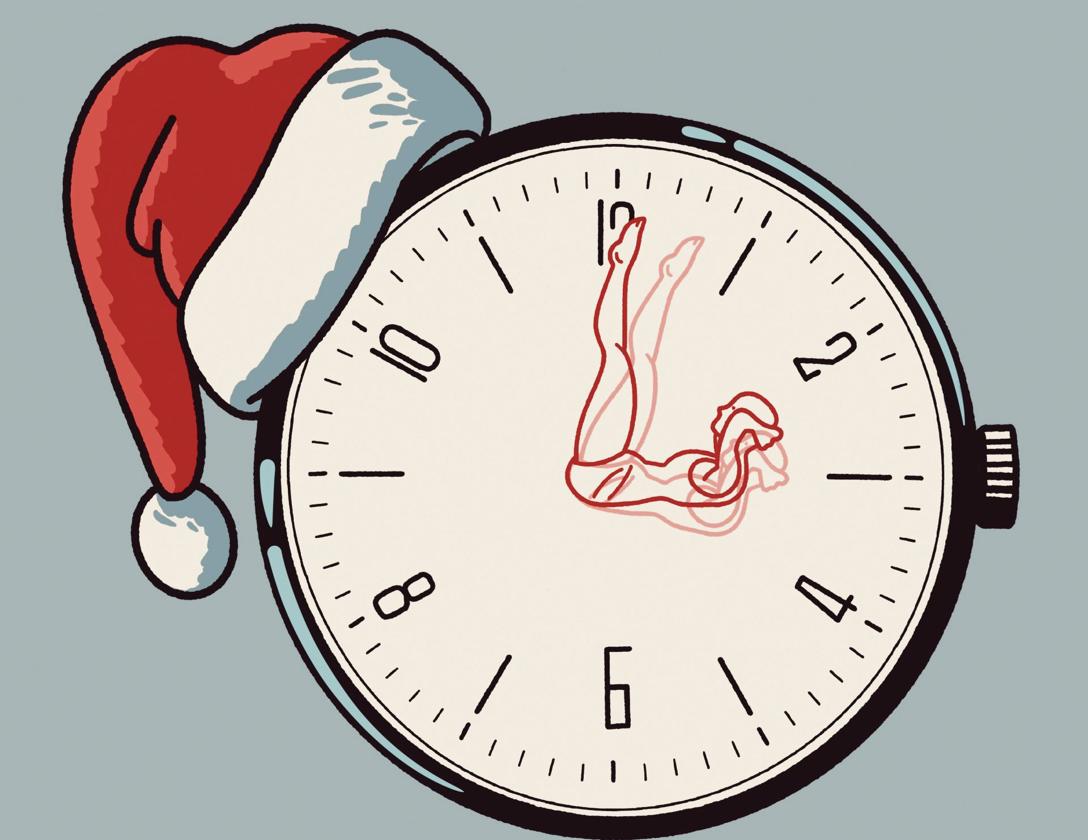

Sections
Highlight

Marta Fernández Vallejo
Madrid
Friday, 20 December 2024
When we are asked why we don't exercise more (assuming we do any at all), the usual excuse is a lack of time, an argument that crops up even more frequently with overweight people. This has shown up in a survey carried out by the Spanish obesity surgery society (Seco), which advises short bursts of exercise throughout the day in the time it takes to pop some pills. Such exercise should be of short duration and of medium-high intensity to reduce the effects of a sedentary lifestyle. Now would be a good time to start this routine as it would help to ease up on the binge eating that is likely to happen during the upcoming festive season when, in addition, shopping and commitments make it very difficult for us to go to the gym, go for an hour's walk or do some sport.
These are simple activities, "such as climbing a flight of 60 stairs three times - two at a time if we want to make it harder - or exercises of just one minute, such as squats or simply lying down on the floor and getting up, two, three or five times a day," explains César Bustos, a Seco member. Incorporating these small intervals of physical effort into our daily routine "helps to reduce the risk of cardiovascular disease and mortality by between 13% and 15%," he says.
For these brief moments of 'getting going,' the most effective type of movement is "combined strength and endurance training," says this expert. To this plan should be added "a hybrid type of training: with games, jumps, apparatus..." These exercise 'nibbles', happening for short, but at frequent intervals, have become "the most effective tool to achieve adherence to physical activity, which is the key to improving habits," argues Bustos, who is also CEO of the company No Excuses.
The great advantage of such exercises is that they can be done at home and without a lot of equipment. "It's all about intense exercise, two or three minutes for every two hours of inactivity," says fitness trainer and nutritionist Ismael Galancho. Priority should be given to short, simple strengthening exercises. The rhythm? "Twenty seconds at full throttle and stop, then another twenty seconds, and so on, until those magical two or three minutes are up," says Galancho.
In addition to squats and stair climbing, which fitness trainers agree are the simplest and most practical ways to increase metabolic consumption, we can do "vertical jumps, strides, jumping rope, abdominal planks or use those stretchy gym bands to work arms and legs." The experts are also in favour of dancing, "which, as well as exercising the heart, strengthens the bones."
A good time of day to include two or three of these brief intervals of intense movement is before a heavy meal, such as those that are coming up over Christmas. "Exercising hours before a big meal reduces hunger and, at the same time, increases metabolism, so whatever you eat afterwards you will burn faster and assimilate it better," states nutritionist Pablo Zumaquero.
Squats and stair climbing. Do 30 repetitions, three times a day. Combine this with climbing stairs (three sets of 60 steps) or going up a height within the house.
Planks and using resistance bands
In a plank position, supported on your hands and feet, with your back straight, hold this position for a count of ten. Do three repetitions. For another variation: with a resistance band around your legs, lift and lower each leg alternately, sideways, forwards, and backwards.
Stretching while cooking
Place your feet parallel and shoulder-width apart – toes pointing forward – interlace your fingers and raise your arms with your palms facing the ceiling. Stretch your back as much as you can. Standing on tiptoe is also very effective.
Science has already shown that these small, intense bursts of exercising yield big results. A study led by the Charles Perkins Centre at the University of Sydney in Australia was able to accurately measure those benefits. "Three to four bursts of a few minutes a day help reduce the risk of premature death, particularly from cardiovascular disease," stated their research. Moreover, the ability to engage in cardiovascular activity, as would happen with these exercises, "is a more powerful predictor of mortality risk than traditional risk factors such as hypertension, smoking, obesity or type 2 diabetes," says Bustos.
Noticia Patrocinada
Publicidad
Clara Alba y José A. González
Juan Cano, Sara I. Belled y Clara Privé
Encarni Hinojosa | Málaga
Esta funcionalidad es exclusiva para suscriptores.
Reporta un error en esta noticia
Comentar es una ventaja exclusiva para registrados
¿Ya eres registrado?
Inicia sesiónNecesitas ser suscriptor para poder votar.